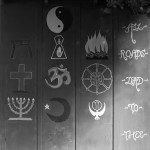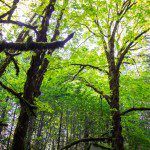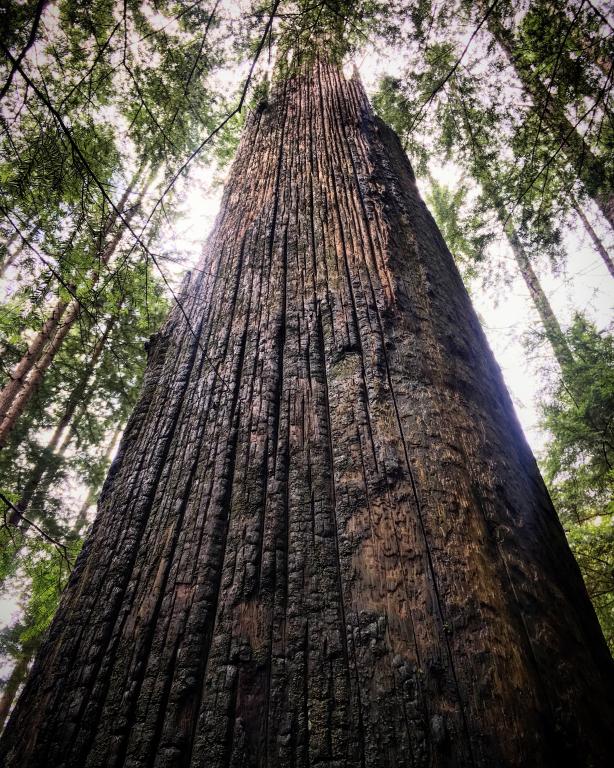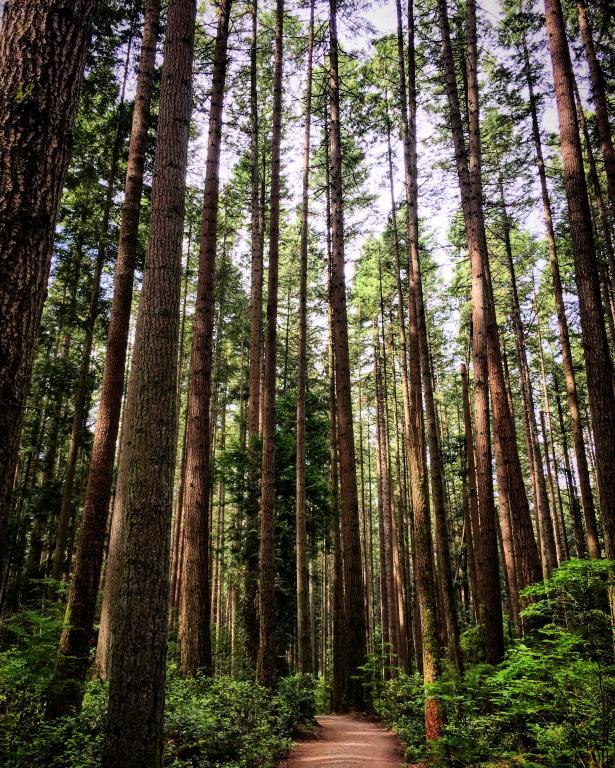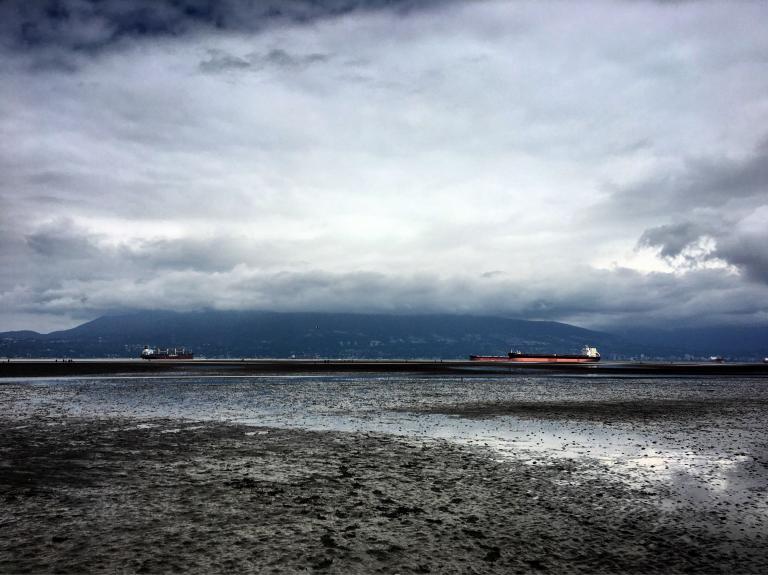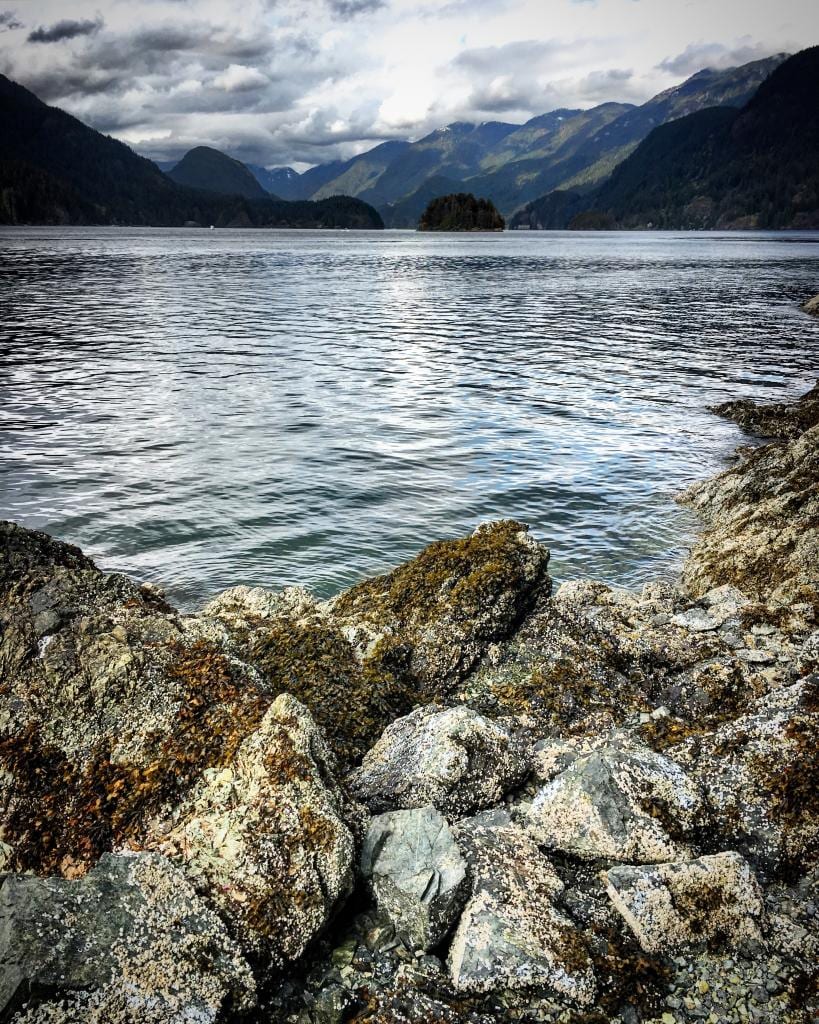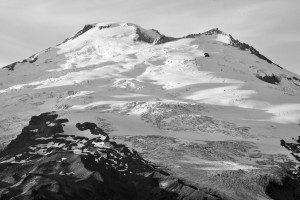 Standing on the creaky porch of Park Butte fire lookout, it felt like I was face to face with the southern slope of Mount Baker. Thirty miles east of Bellingham, Washington, on this 4th of July, the trail had been practically empty. I stayed the night in the lookout, and watched the colorful flicker of fireworks on the coast below mirror the twinkle of the stars above. As I began my hike down the next morning, I wanted somehow to reverence the commanding presence of the mountain in whose close proximity I had slept. I asked myself a simple question: Does it matter if I think of the mountain by its Settler name? Or, should I refer to it by its Lummi name: Kulshan?
Standing on the creaky porch of Park Butte fire lookout, it felt like I was face to face with the southern slope of Mount Baker. Thirty miles east of Bellingham, Washington, on this 4th of July, the trail had been practically empty. I stayed the night in the lookout, and watched the colorful flicker of fireworks on the coast below mirror the twinkle of the stars above. As I began my hike down the next morning, I wanted somehow to reverence the commanding presence of the mountain in whose close proximity I had slept. I asked myself a simple question: Does it matter if I think of the mountain by its Settler name? Or, should I refer to it by its Lummi name: Kulshan?
I didn’t really know anything Mr. Baker, except that he was English; or much about the word Kulshan, except that it was one of the hip new breweries in town. So, I mustered a hasty sign of the cross, brought my hands close to my heart, and said ‘thank you.’
After my trip, I began to do a little research. Mount Baker is a 10,700 foot, relatively young at 100,000 years, active strato-volcano. Which means it is made up by layers of igneous rock, lava and pumice. It is glaciated, and snow-covered year round and has one of the highest snowfalls in the world.
Coast Salish peoples have dwelt in the area for at least 14,000 years. The Lummi word for the peak is as I already knew Kulshan, but it doesn’t mean White Sentinel, or The Shining One as I had heard. The word means something closer to ‘puncture wound.’ For the nearby Nooksack people, Kulshan actually refers to the area around the peak, used for hunting and gathering. Kweq’ Smánit, which simply means ‘white mountain’, is the name for the summit.
There are at least two stories associated with Kulshan. A 1919 ethnography recorded a retelling of the story of the Thunderbird, a supernatural being who dwells in the tops of mountains. A Lummi man related
“Thunder is caused by a great bird…the thunderbird is many hundreds of times larger than a fish hawk. It is so large that it can carry a large whale in its talons from the ocean to its nest….This huge bird has its home yonder on Mt. Baker, where you see the clouds piling up now. Whenever this bird comes from its nest and flies about the mountain top it thunders and lightnings, and even when it is disturbed in its nest it makes the thunder noise by its moving about even there…. The lightning is caused by the quick opening and shutting of its powerfully bright, snappy eyes and the thunder noise by the rapid flapping of its monstrous wings” (Reagan, 1919, 435).
The Thunderbird is a being in most if not all Coast Salish cosmologies, and it is often both a respected and feared presence in the land that demands respect and sometimes placation through the burning of ceremonial fires. For the Squamish peoples, the rich deposits of obsidian are places where lighting that shoots from thunderbirds eyes hit the earth.
The ethnographer Charles Buchanan in 1916, recorded another story of a man named Kulshan who had two wives; one beautiful, and one kind. Kulshan loved the kinder wife more, and the beautiful wife grew jealous and decided to leave him, hoping he would realize what he lost and come after her. As she walked south, she turned back many times to see if Kulshan was looking, and as she got farther away she had to stretch higher and higher to see Kulshan. Eventually she made camp on a high outcropping and stared back at Kulshan, waiting for him to come. Eventually she turned into the peak we today call Mount Rainier, and he into Mount Kulshan.
During the age of conquest, the mountain was sketched by Gonzalo Lopez de Haro on a Spanish voyage in 1790. He named it ‘La Gran Montaña de Carmelo,’ in reference to both Mount Carmel, but also the Carmelite Order, home of Saint John of the Cross and Teresa of Avila. In 1792, it donned the now familiar name of Englishman Joseph Baker, who was Captain George Vancouver’s Lieutenant.
Over the years, Anglo mountain climbers, ethnographers and history buffs have been in favor of renaming the peak Kulshan. Proof of this are the dozens of local businesses, mountaineering clubs, or botany societies who have taken it on as a namesake. But in doing so are we paying deference to an authentic place-name tradition? Or feeding our own ideas about indigeneity? Perhaps both.
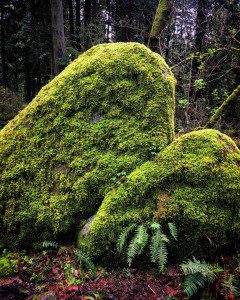 Personal Spiritual Ecology
Personal Spiritual Ecology
Acknowledging indigenous place-names certainly look toward a reconciliatory stance, provided it is accompanied by respect for sacred sites, more resource management autonomy, and Treaty and Title rights if possible. However, phenomenologically, a place-name does not automatically give us admittance to the world the name upholds. For example, Coast Salish place-names are fairly simple descriptives: ‘white mountain’, ‘place for herring fish’, etc. It is rather, the activities of dwelling that accumulate around those place-names that give rise to an experience of the world. This is beautifully illustrated of course by Keith Basso’s Wisdom Sits in Places but unlike Basso’s semiotic approach, Tim Ingold’s insights show us that landscape is not just a cultural layer we project onto the physical world, but the world itself. While I might be able to understand or recall certain Coast Salish place-names or stories, I must admit that I do not dwell in that world, and an attempt to do so for my own academic or spiritual curiosity carries with it the weight and suspicion of the colonialism of the last 200 years. In addition, in retelling these stories, there is the danger not only of losing details in translation, but importing my own world into the telling. And yet, are there any ontologies, especially today, that are not plural? Hybrid?
Learning about the history of the mountain, I confess that Mount Carmel resonated most with me. I am of course aware that to stick with ‘Carmel’, is to return to where we started, to run the risk of perpetuating imperial Christianity; but it is also to connect the place to the rich contemplative spiritual tradition of which I am a practitioner. John of the Cross’s Ascent of Mount Carmel, features the mountain as a symbol for our longing for union with God.
Lastly, regardless of one’s spiritual orientation, the land can speak to us in ways that we cannot always predict. I recall sitting in a discussion group at a Salish Sea conference. I made some point about place names. A Nooksack woman responded patiently that it was not we who named places, but the places themselves that gave people their names as gifts when they are ready. Translated into contemplative spirituality, this is the practice of attention, or, Prosoche (pro-soh-KHAY) in Greek. Being present a person, place, or organism, we listen to what they might say about the world, about ourselves, or about God. Perhaps it is with this practice that new names and thus, new worlds might arise.
This paper was presented at the recent Mountains and Sacred Landscapes Conference at the New School for Social Research in New York City.
References
Buchanan, Charles M. 1909. The Origin of Mounts Baker and Rainier: The Indian Legend, The Mountaineer, Volume 9, pages 32-35, Seattle WA.
Reagan, Albert 1919. Some notes on the Lummi-Nooksack Indians. Transaction of the Kansas Academy of Science, pages 423-437.
Richardson, Allan and Brent Galloway 2011. Nooksack Place Names: Geography, Culture, and Language, UBC Press, Vancouver BC.
Winthrop, Theodore 1862. The Canoe and the Saddle: Adventures Among the Northwestern Rivers and Forests and Isthmiana, John W. Lovell Company, New York NY.
http://arcadianabe.blogspot.ca/2012/12/koma-kulshan-mysterious-mountain-moniker.html
http://www.stumpranchonline.com/skagitjournal/Washington/Whatcom/MtBaker/Baker5-IndianLegend.html

